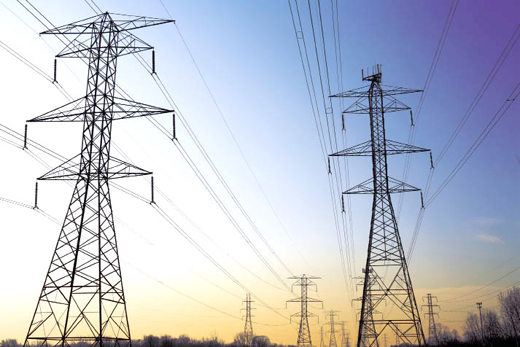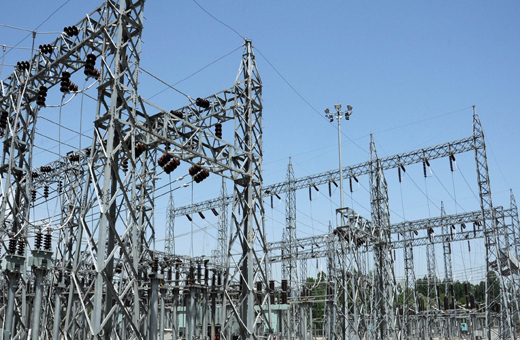Energy deficit, particularly electricity supply, has been a bane for the state government and the people. Part of the problem is mismanagement, inability to curtail T&D losses and to sufficiently exploit hydro resources. But some things may change soon as Tasavur Mushtaq finds out.
At 65.78 percent, Jammu and Kashmir top Indian states in the aggregate technical and commercial (AT&C) losses of electricity. However, there is a high likelihood that the story after two years from might be entirely different. If nothing goes off the script J&K’s 30 major towns should report a marginal T&D loss after two years.
“After a couple of years the situation will be different and importantly positive,” a senior officer of PDD, wishing not to be named, told Kashmir Life.

The officer who is involved in the process said that AT&C loss is deliberate and absolute theft. Having bitter experience of 2005 when the era of digital metering started, he says every step taken faced huge resentment from the public. To install one meter we had to fight.”
At 65.78 percent, Jammu and Kashmir top Indian states in the aggregate technical and commercial (AT&C) losses of electricity.
To break the often held belief by many consumers, that electricity is free of cost, the department has a tough nut to crack. “We tried to make people realise that this is not for grabs but you should pay according to your usage,” said the officer. Narrating interesting episodes during the meter installation he said,“ even if they agreed they insisted that the meter be put near the window.” The officer believes that even after imposing penalty the mindset is still the same. “Hooking is rampant,” said a middle rung officer.
The department is now in the process of plugging the loopholes to avoid meter tampering. “I think they (consumers) get tempted when they see an opportunity, better is not to give them any,” said a senior engineer of PDD.Facing an acute energy deficit and losing hugely through AT&C, the state’s power ministry is using the most modern systems for distribution of electricity and the latest IT-enabled applications for energy auditing and accounting. “Our distribution networks will now be ring-fenced and we are using imported imageries to ensure the consumers avail the facilities as per the agreements they have entered with us,” said another senior officer of the power department.“It is real-time monitoring using various IT applications including supervisory control and data acquisition (SCADA) for which we have entered into an agreement with Wipro.”
A High Voltage Distribution System (HVDS) is in place, the idea being to have a conduction system for 11000 V. Small transformers of 16 KVA capacities each will be put in place to supply electricity to three households and meters will be put under the transformer. “From LT side through cables we will distribute to three households,” said the officer.
The positive of this initiative is that if there is overload, the supply will trip resulting in minimizing outages. Even if there is any outage, only three houses will suffer instead of an entire locality. The PDD, besides enhancing the quality of distribution, would also check the load on the real-time basis.

The plan is working successfully showing zero losses and the basic experiments carried out in a north Kashmir peripheral township suggested that the systems are very effective. “We did actually identify all the 137 illegal consumers the moment they hooked their lines with the supply network,” the officer said. Currently, it is being implemented in Deewan colony Brain, Srinagar’s satellite locality on the farther side of the Dal Lake.
However, HVDS in congested localities like the old city is not possible. The plan envisages using the aerial bunched cable (ABC) and using a whole new lot of IT-enabled applications and systems that would help the department monitor the consumption on the real-time basis. “We will take insulted cables from lanes and bylanes as the area is congested,” the officer said. This may actually lead to the unbundling of the power distribution system later.
The project is being implemented with the Rs 191 crore grant (centre Rs 152 cr and state Rs 39 cr) under accelerated power development and reforms programme (APDRP). “The centre has in principle approved the phase two of the APDRP called restructured- APDRP(R-APDRP) worth Rs 1700 crores that will take care of 288 towns having a population of 4000 souls and more each,” the officer said.
APDRP
The government of India approved this APDRP in March 2003. The scheme was launched to reduce AT&C losses and bring about commercial viability in the power sector. It will help in reducing outages & interruptions and increase consumer satisfaction. Distribution reform is identified as the key area to bring about efficiency and improve the financial health of the power sector.
R – APDRP
The GoI has proposed to continue R-APDRP during the XI Plan with revised terms and conditions as a Central Sector Scheme. The focus of the program shall be on actual, demonstrable performance in terms of sustained loss reduction.Establishment of reliable and automated systems for sustained collection of accurate baseline data, and the adoption of Information Technology in the areas of energy accounting will be essential before taking up the regular distribution strengthening projects.
It is proposed to cover urban areas, towns, and cities with the population of more than 30,000 (10,000 in case of special category states).In addition, in certain high-load density, rural areas with significant loads, works of separation of agricultural feeders from domestic and industrial ones, and of High Voltage Distribution System (11kV) will also be taken up.
Funding Mechanism
GoI will provide 100 percent loan for the initial phase of the R-APDRP schemes which shall include projects for establishing Base Line data and IT applications for energy accounting/ auditing and IT-based consumer services etc. Central Government will provide up to 25 percent (90 percent for special category States) loan for the later part of the R-APDRP schemes which shall include regular distribution strengthening projects.The entire loan from GoI will be routed through PFC/REC (FIs) for the respective schemes funded by them.The counterpart funding will be done by PFC/REC (FIs) as per its prevailing policy. PFC / REC will be the prime lender for funding these schemes. Conversion of GoI Loan into Grant
The entire amount of GoI loan for the first stage of the project shall be converted into the grant after the establishment of the required Base-Line data system within a stipulated timeframe and duly verified by TPIEA. Up to 50 percent(90 percent for special category states) loan for later phase of the projects shall be converted into the grant in five equal tranches on achieving 15 percent AT&C loss in the project area duly verified by TPIEA on a sustainable basis for a period of five years.If the utility fails to achieve or sustain the 15 percent AT&C loss target in a particular year, that year’s tranche of conversion of loan to grant will be reduced in proportion to the shortfall in achieving 15 percent AT&C loss target from the starting AT&C loss figure.
GoI in April 2005 also launched Rajiv Gandhi GrameenVidhyuthikaranYojana (RGGVY). This scheme aims at electrifying all villages and habitations as per new definition and providing access to electricity to all rural households. The electricity connection to Below Poverty Line (BPL) families will be given free of charge.

For better connectivity, power ministry of Jammu and Kashmir is in the process of laying an optic fiber cable (OFC) on its twin transmission lines that would offer it the flexibility of getting almost every station connected. “We can important bandwidth and we have clients in tow,” the officer said. “Right now we are in the process of negotiating the power line carrier communication (PLCC) idea and we expect it to cost around Rs 60 crores.Part of the bandwidth we will sell and the fraction of it will help us to network our systems and operations.”
GoI in April 2005 also launched Rajiv Gandhi GrameenVidhyuthikaranYojana (RGGVY). This scheme aims at electrifying all villages and habitations as per new definition and providing access to electricity to all rural households.
To ensure timeline completion, the PDD has entrusted the job of monitoring to McKinsey on power reforms in Jammu and Kashmir and megaprojects under execution in power sector in the state. The company has almost completed its report and is likely to submit it to the state government soon.
During the current year seven Grid Stations at Mir Bazaar (Islamabad), Budgam, Magam, Lissar (Kokernag), Ramban, Bishnah and Katra have been completed while Grid Stations at Willgam (Kupwara), Delina (Baramulla), Chandak (Poonch), Pouni Chak (Jammu) and some other places are nearing completion and likely to be commissioned shortly.
Omar Abdullah, who holds the portfolio recently said that his government aims at reforming power sector both in the disciplines of generation and transmission to ease the position of current power availability in the state. “Some 5000 MWs of hydroelectricity will be generated locally in the state during next about 6 years,” he said. “Its employment generation capacity, directly and indirectly, is of immense significance.”
The state government is facing a serious crisis because of pilferage. It is purchasing power but is unable to raise the power tariff. During 2010-11 when the power department purchased power for Rs 2309.94 crores, it could only collect power tariff of Rs 969.59 crores leaving the balance amount to offset the overall public finance.















